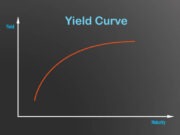
A payment bond and performance bond are two type of surety bonds that contractors may be required to provide for their clients. While both provide a form of protection, they serve different purposes.
Essentially, a payment bond is a guarantee to the client that the contractor will pay subcontractors, laborers, and suppliers on the project, while a performance bond guarantees that the contractor will complete the work as stipulated under the contract.
When it comes to the cost of these bonds, however, there is a difference in the premium paid. In this blog, we’ll be exploring the difference between the premium for payment bonds versus performance bonds.
Payment Bond Premium:
Payment bonds are typically cheaper than performance bonds. This is because the risk involved in a payment bond is lower compared to a performance bond. For a payment bond, the surety company assumes that there will be no major issues with the project, and that can make the premiums cheaper. The bond premium generally ranges between 1%-2% of the total contract amount. This means that for a $100,000 project, the bond premium can fall between $1000-$2000.
Performance Bond Premium:
The premium for a performance bond is usually higher than the premium for a payment bond. This is because the risk involved with a performance bond is higher. In most cases, a contractor’s bid is calculated based on the estimated costs of labor and materials. There is always a cost difference between the contractor’s estimate and actual costs, and this can lead to cost overruns or delays. The surety company will assume this risk by guaranteeing the completion of the project, hence the premium is generally between 2%-5% of the total contract amount.
Bond Underwriting:
The difference in premium cost varies depending on several factors like the size of the contract, the contractor’s qualifications, past experience, and financial stability. The surety company needs to assess the contractor’s risk level by carefully underwriting the bond. Payment Bond underwriting is generally less strict, and it is easier to obtain a payment bond than a performance bond. Performance Bond underwriting is more thorough as it requires the surety company to investigate the contractor’s work history, current financial situation, and credit history.
Bond Renewal:
Once bonded, contractors may be required to renew their bond each year. The premium cost is not fixed and may vary depending on the previous year’s performance. If a contractor has consistently provided high-quality work and timely payments in the past, this will reduce their premium cost. On the other hand, if a contractor has past performance issues or defaults, it may increase the premium cost.
Choosing the Right Bond:
Choosing the right bond depends on the project’s requirements and the client’s specifications. A client may request either a payment bond or performance bond or both. It is important to understand the differences, requirements, and pricing before accepting any bonds. Additionally, engaging a trusted and reputable surety bonding company can help you navigate the complexities of bonding and financing in construction.
Conclusion:
In conclusion, while payment and performance bonds both provide protection for clients and subcontractors, they differ in their risk level, the premium cost, underwriting, renewal, and specifications. Understanding these differences is crucial for contractors so that they choose the right bond for the job and manage their bond portfolio effectively. It is also essential to work with a reputable and experienced bonding company, such as Surety Bond Authority, who offers a wide range of bonds at competitive rates and expert advice.


































